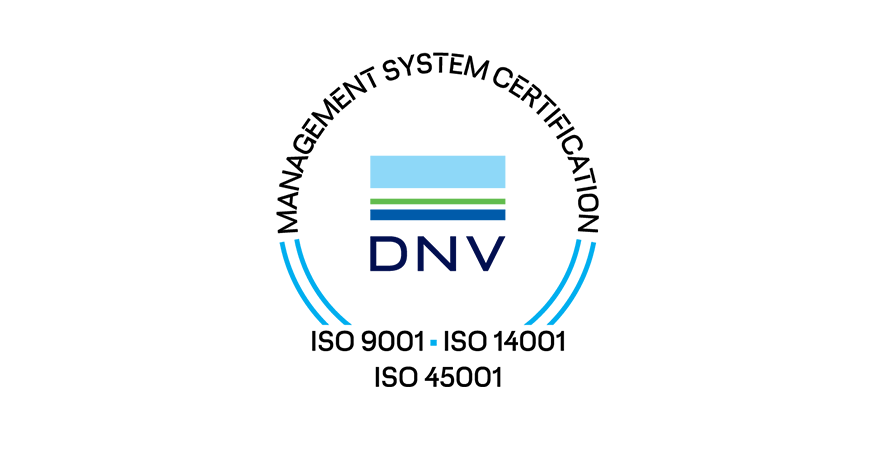
Electrolyzer validation and qualification: thinking wind and hydrogen together

IWES operates technology-independent test platforms (hydrogen labs) for the qualification and optimization of electrolyzers – from the cell to the industry stack right up to full system level – with a total connection power of up to 26 MW. In addition to electrolyzers, hydrogen-consuming units and parts of the peripheral infrastructure are also tested here. Among other things, the long-term stability of materials and components in the dynamic operation of electrolyzers coupled with wind turbines is being tested.
Furthermore, the world’s leading facility for grid integration tests is available at the Dynamic Nacelle Testing Laboratory (DyNaLab). As future electrolyzers will be connected to the power grid as large consumers, their grid-supporting properties are very important, which is why their determination and optimization is a focus of research and development. We provide the manufacturers with support in the further development of their products accordingly.
There is also a test platform for coupled PtX processes available, allowing mapping of the entire value chain from renewable, load-flexible energy production to hydrogen production right up to material utilization as well as corresponding testing and researching on an industrial level.

Privacy warning
With the click on the play button an external video from www.youtube.com is loaded and started. Your data is possible transferred and stored to third party. Do not start the video if you disagree. Find more about the youtube privacy statement under the following link: https://policies.google.com/privacyFraunhofer Hydrogen Labs
Our areas of expertise
- Upscaling in new performance classes – safe and sound!
- Mapping of the entire value chain
- Core competence: grid integration tests
- Co-simulation of usage scenarios
- Modeling and control of decentralized and local energy systems
- Certification I Accreditation
- Expertise in application: reference projects for this service portfolio
Upscaling in new performance classes – safe and sound!
The market ramp-up of green hydrogen requires reliable, safe, and cost-optimized systems and components along the entire value creation chain for widespread use in industry and business. In addition to operational safety, costs play a central role here. The development of high-performance, cost-effective, and reliable components and the establishment of series production for electrolyzers and fuel cells generate savings potential.
Experimental testing and modeling based on it significantly reduce the risk associated with the upscaling of electrolyzers to new performance classes and areas of application, which are essential for offshore applications among other things. IWES boasts core competences in the field of electrochemical analysis and tests cells and stacks at microscopic level. Stack tests and systems tests up to industrial scale can be performed in the hydrogen labs, making it possible to transfer knowledge acquired on a microscopic scale to large-scale systems. Work in the opposite direction, the feedback of effects observed in the whole system to the microscopic level, is also conceivable. This interplay of system and individual component tests allows holistic optimization.
Mapping of the entire value chain
Fraunhofer IWES considers the entire hydrogen value creation chain from production through to usage. The competencies and infrastructures of related institutes are called in for specific issues. Our customers include both globally operating groups and small and medium-sized enterprises in the region.
Model processes of sector coupling can also be demonstrated and tested. This is particularly important in the case of fluctuating energy supply from renewable sources in order to ensure security of supply and to enable the storage of power surpluses. Operating strategies for stand-alone solutions will be developed across systems and optimized under techno-economic aspects.
Core competence: grid integration tests
A stable grid is a fundamental requirement for security of supply. The grids are not always designed for highly decentralized feed-in points with grid-side inverter connection and fluctuating energy supply.
When there is an oversupply of renewable energies in the grid at present, wind turbines are often switched off so as not to overload the grid – or the electricity is sold abroad below price. One option is to utilize this “excess electricity” to produce hydrogen, which serves as a chemical energy store. With increasing grid-connected electrolyzer capacity, these “consumers” will need to provide grid system services in the future, just like on the production side. Performing grid integration tests in the hydrogen labs will help to validate these system properties prior to large-scale market integration.
Co-simulation of usage scenarios
Key components of the hydrogen value chain will be modeled. A coherent data and model space will also be created for the co-simulation of usage scenarios for a future hydrogen economy.
We are working to expand a reference architecture for digital twins in such a way that it can represent the modularity of renewable energy systems and take registered changes to the system into account. This will create the basis for a comprehensive, generic digital twin of wind and hydrogen energy systems.
Modeling and control of decentralized and local energy systems
Beyond this, the Fraunhofer Application Center for the Integration of Local Energy Systems (ILES) at IWES is investigating systematic aspects of the production of green hydrogen using electrolysis in cooperation with its partners, the Competence Center for Renewable Energies and Energy Efficiency (CC4E) and the Hamburg University of Applied Sciences (HAW Hamburg). The focus of this research is on the modeling and control of decentralized and local energy systems. These assessments help to improve technical reliability and system efficiency, thus saving costs.
